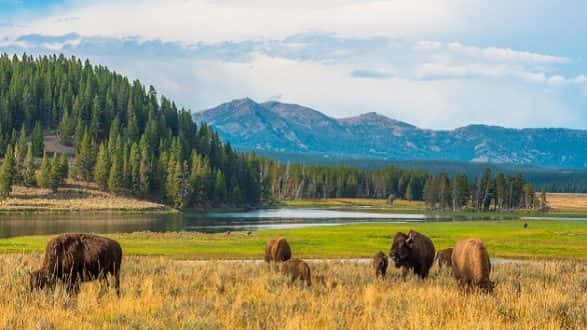
Manel Vinuesa/iStock(WASHINGTON) — National Park Service staff and communities around the national parks issued pleas for the visiting public to consider the risk of exposure to the novel coronavirus in national parks, saying that despite the desire to get out of their homes, crowded trails or parking lots could be creating an unnecessary risk for visitors and staff.
Shenandoah National Park asked on social media that people forego the park’s main trails for less popular areas, saying some areas became so congested they had to be closed.
The National Mall’s social media accounts have been sharing photos of the cherry blossoms and asked people not to visit the Tidal Basin area. Local officials have closed roads and public transit to the area, saying on Saturday that it was “increasingly difficult to maintain effective social distancing.”
Zion National Park also posted a photo of people hiking a crowded Angels Landing Trail on Saturday and asked visitors to reconsider narrow trails and to practice social distancing.
The requests seemed to support the concerns of some advocates who criticized the Interior Department’s decision last week to suspend entrance fees and welcome visitors to national parks as a respite from their social isolation at home. In that announcement Interior Secretary David Bernhardt called public lands “special outdoor experiences to recreate, embrace nature and implement some social distancing.
But advocates disagreed with that decision and said the department should have been more direct in telling people stay away from potential crowds, even in national parks.
“We needed to close in order to reach the goals that most Americans would agree are important, that is to flatten the curve, make sure hospitals have adequate resources and make sure the National Park Service doesn’t inadvertently create a bigger problem,” said Phil Francis, a former park superintendent and chairman of the Coalition to Protect America’s Parks.
The coalition represents hundreds of retired park service employees and Francis said they heard almost immediately from members who were concerned about their colleagues who would continue to work despite calls for people to stay at home and prevent the spread of the virus. Though many parks closed some areas, such as visitor centers, where people could come in close contact, Francis said there are other areas in parks where it is difficult to prevent crowding.
“The picture in many people’s minds is the great outdoors — there’s plenty of space — but when you go to find access to that space there’s usually a parking lot and there’s usually a trail going from the parking lot,” he said, adding that paths in parks are designed to guide people to the best views or trails which naturally cause people to gather in those spots.
Francis said despite the temptation to get a break from home, the public should consider the risk to society as a whole and only visit places where they can reasonably follow Centers for Disease Control and Prevention guidelines on limiting contact with others and maintaining at least 6 feet of distance in public.
Communities near national parks have also raised concerns about the current number of visitors, saying they don’t have the resources to treat an influx of tourists that could potentially become sick in addition to their own residents.
“These are in many cases rural communities that don’t have the facilities to handle a major outbreak if it were to occur and they want to protect the people that live in the county and you do the math and you jut can’t handle tourists on top of people that live in the county,” said Kristen Brengel, senior vice president of government affairs for the National Parks Conservation Association.
Brengel said it was irresponsible for the National Park Service to invite people to parks during this pandemic and that they should have been more aggressive about telling people to avoid crowded areas. She described photos of people holding a chain at the top of a narrow trail to keep their footing and said it’s up to the park service to tell the public when visiting these spots is too much of a risk.
“People are taking these risks with allowing the public to make these decisions for themselves and I think we’re learning after this weekend that parks need to be more proactive,” she said.
The Interior Department and National Park Service did not immediately respond to questions about whether they were reconsidering the earlier guidance on Monday but said last week that they took steps to implement CDC guidelines and that park superintendents were “continuing to evaluate their park’s operations and determine the best ways to continue to serve the public, mitigate possible issues, and adjust operations, as necessary.”
“We’ve encouraged people who do visit a park during this pandemic that they too should be following CDC guidance by maintaining safe distances and practicing ‘leave no trace’ to keep themselves, our communities, and our outdoor spaces safe and healthy during this time,” a Park Service spokesperson said in a statement on Friday.
Brengel advised that if people want to visit a national park responsibly at this time to consider if you can follow trails that are off the beaten path or identify areas that are less popular.
“If you’re going to a park you’re not familiar with and you’re relying on a map it’s probably better to just reschedule,” she added.
Copyright © 2020, ABC Audio. All rights reserved










